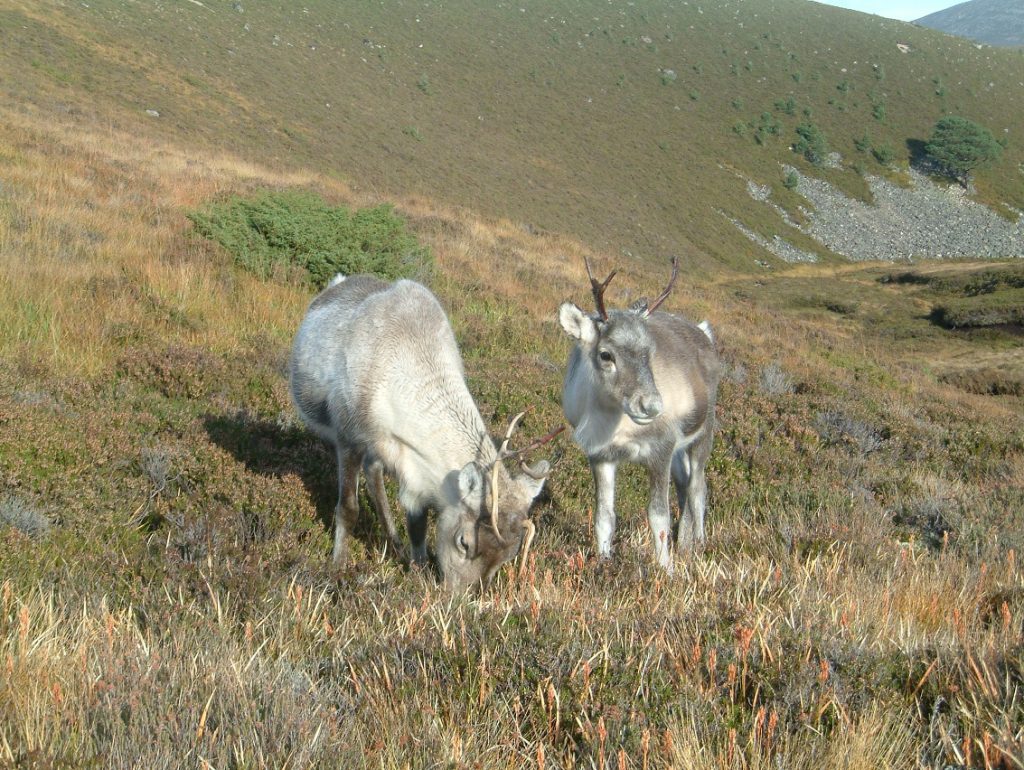After the busy Christmas season the entire reindeer herd free-range, either here on the Cairngorms or on the Cromdales. The staff working at the Reindeer Centre take care and deal with any reindeer related antics on the Cairngorms. Meanwhile the reindeer free-ranging on the Cromdales are looked after predominantly by Tilly and the farm crew.
On the days when Tilly needs an extra pair of hands, the shout goes out and one of us herders drive around the hills to help out, never quite knowing what the day will involve until we’re there! I answered the call to help in early January, and what a great day I had! By the time I arrived Tilly had already been out to call in the reindeer. Thankfully reindeer are ruled by their stomachs, so the offer of a free meal was too tempting as Tilly had successfully managed to call almost all of the herd into the corral. Little did they know it happened to be routine temperature checking day…!
After a quick de-tour to help feed the pigs, five of us headed on to the Cromdales on quad bikes. Tilly, Colin S, volunteers Davey and Christine, plus myself. The small number of reindeer who hadn’t come to Tilly’s earlier call, clearly decided they were missing out as they were waiting for us when we arrived.

I’ve never been to Sweden, or any other reindeer herding nation, maybe it was just the blue sky, cold temperature and low sunlight, but it felt like I was somewhere further afield than the Cromdales! I can imagine the corral that Alan has built up on the hill would be little like the one Sami people might use. It’s more rustic than the enclosure on Cairngorm where we take our Hill Trips, but does it’s job perfectly.
There is a corridor which goes around the main corral so the five of us were able to gently push the reindeer out of the corral and into the corridor. This allowed us to open the external gate to the hill allowing the latecomers to enter, whilst not letting any suspicious reindeer out!


We gently pushed the reindeer in batches along the corridor into a small pen at the end where we took the temperatures of all the reindeer, calling out their names to Christine who was armed with a list of the herd and a clipboard, checking everybody off and keeping us right. Once each batch of reindeer had a thermometer in the bottom and was sprayed between the legs with a treatment to prevent ticks from biting they were released back on to the hill. They can’t have had a bad experience as they didn’t dash for the high tops, rather they just milled around the outside waiting for the rest of the herd, and most importantly for their well-deserved dinner! It was a very fun way to spend a day and thankfully all the reindeer were fine and well.






Ruth































































